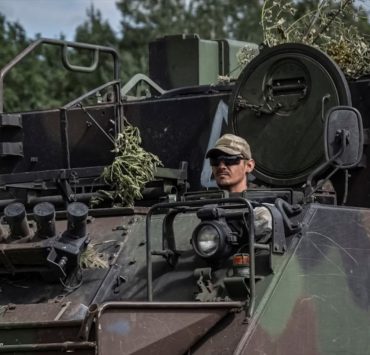AFP chief: China fighters ‘endangered’ PAF plane

Chinese fighter jets recently made a “dangerous” move against a Philippine Air Force (PAF) plane, firing flares into its path as it was flying over Panatag (Scarborough) Shoal in the West Philippine Sea, the Philippine military chief said on Saturday.
Gen. Romeo Brawner Jr. condemned the “provocative actions” of the People’s Liberation Army Air Force, saying it “endangered the lives of our personnel undertaking maritime security operations” on a twin-prop NC-212i plane over the shoal, also called Bajo de Masinloc, around 9 a.m. on Aug. 8.
The two Chinese multirole combat jets “executed a dangerous maneuver” and “dropped flares in the path of our NC- 212i,” according to Brawner.
“The incident posed a threat to Philippine Air Force aircraft and its crew, interfered with lawful flight operations in airspace within Philippine sovereignty and jurisdiction, and contravened international law and regulations governing safety of aviation,” he said. The crew and the PAF aircraft returned unharmed to Clark Air Base about an hour later.
China has controlled Panatag, a traditional Filipino fishing ground about 220 kilometers west of Zambales province, since 2012 after a two-month standoff with the Philippine Navy.
There was no immediate response from the Armed Forces of the Philippines officials who were asked by the Inquirer on whether it was the first time that Chinese combat jets fired flares close to PAF planes.
In separate incidents in 2019, 2021 and 2023, the Chinese fired flares from several artificial islands they had built in the West Philippine Sea as PAF patrol planes approached.
In May this year, a Chinese fighter jet fired flares also in the path of an Australian military helicopter. Australia’s Defense Minister Richard Marles denounced the action, saying it was “unsafe and it is completely unacceptable.”
Brawner said the AFP reported the incident to the Department of Foreign Affairs (DFA) and concerned government agencies.
“We reaffirm our commitment to exercise our rights in accordance with international law, particularly Unclos (United Nations Convention on the Law of the Sea) and the Chicago Convention (on aviation safety),” he said.
There were no immediate comments from the DFA or the other agencies concerned with the country’s maritime domain regarding the actions of the Chinese air force.
The firing of the flares by the Chinese follows a recent agreement between Manila and Beijing for an unmolested delivery of essential supplies to Filipino troops manning the BRP Sierra Madre, the crumbling Philippine Navy warship serving as an AFP outpost at Ayungin (Second Thomas) Shoal.China’s air force jets harassed the PAF plane as one of its survey ships lingered in the West Philippine Sea, waters within the country’s 370-kilometer exclusive economic zone (EEZ).
After sailing from Escoda (Sabina) Shoal and Panganiban (Mischief) Reef, the Chinese survey vessel Ke Xue San Hao was spotted in the southern part of the resource-rich Recto (Reed) Bank, according to US maritime expert Ray Powell.
In a post on X on Friday night, Powell, who is the director of SeaLight, a program of Stanford University’s Gordian Knot Center for National Security Innovation that tracks Chinese activities in the West Philippine Sea, said the 74-meter Chinese ship entered the waters in the vicinity of Recto Bank around 10:30 p.m. on Thursday.
No request for survey
The shallow seamount, about 270 km west of El Nido in Palawan province and well-within the Philippines’ EEZ, is believed to be rich in gas and oil deposits.
On Aug. 6, Rear Adm. Roy Vincent Trinidad, the Philippine Navy spokesperson, said that they had been monitoring the Chinese survey ship in the WPS.According to the DFA, there has been no request from the Chinese ship to survey the area, Trinidad said.
He told reporters that the Chinese survey vessel was doing a suspicious “zigzag” movement, unlike ships making an innocent passage through another country’s waters.
“It is not normal for a ship to be there or fishing vessel to be there and her track is not continuous and expeditious,” Trinidad said. “What type of survey? That remains to be seen.”
‘Clear intrusion’
In May this year, the AFP also observed three other Chinese research vessels making an unauthorized entry into the West Philippine Sea while a similar ship was also seen loitering on the eastern side of the archipelago.
The three Chinese research vessels were also sighted at Ayungin.
In March this year, Chinese research vessels were also spotted in waters of the Philippine Rise.
President Marcos expressed “great concern” at that time, saying that the Chinese research ships’ presence there was a “clear intrusion into our Philippine maritime territory.”
Data from the AFP showed that 122 Chinese vessels, including three Chinese warships, swarmed various parts of the West Philippine Sea from July 30 to Aug. 5.It said 12 China Coast Guard (CCG) ships and 106 Chinese maritime militia vessels were also swarming those areas. INQ





















